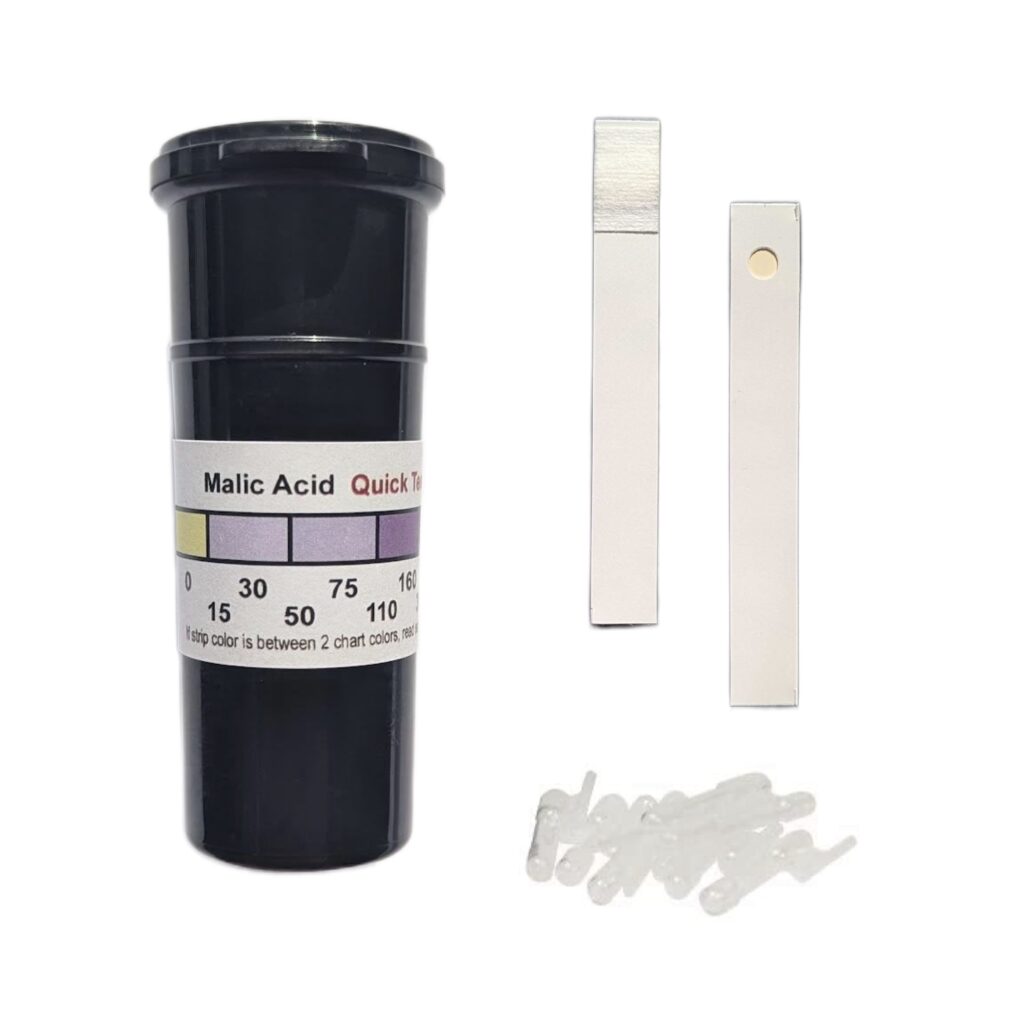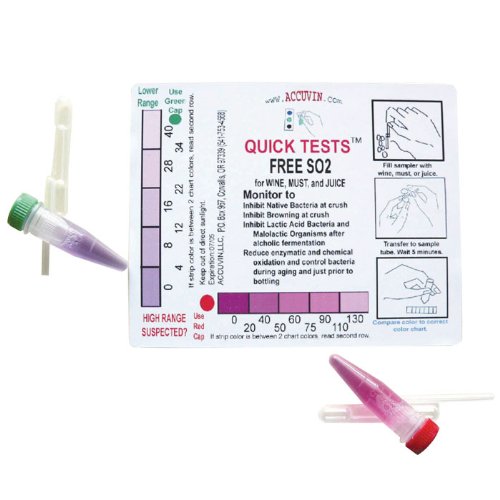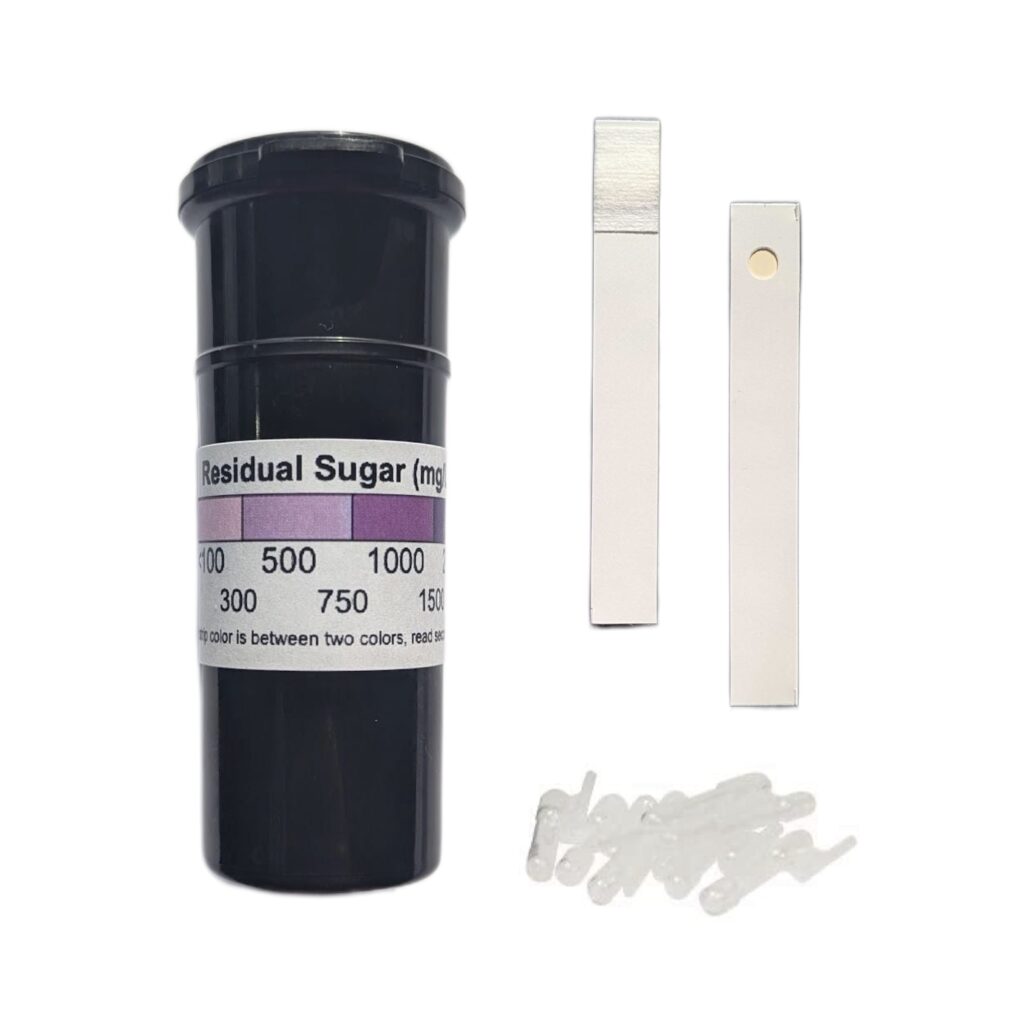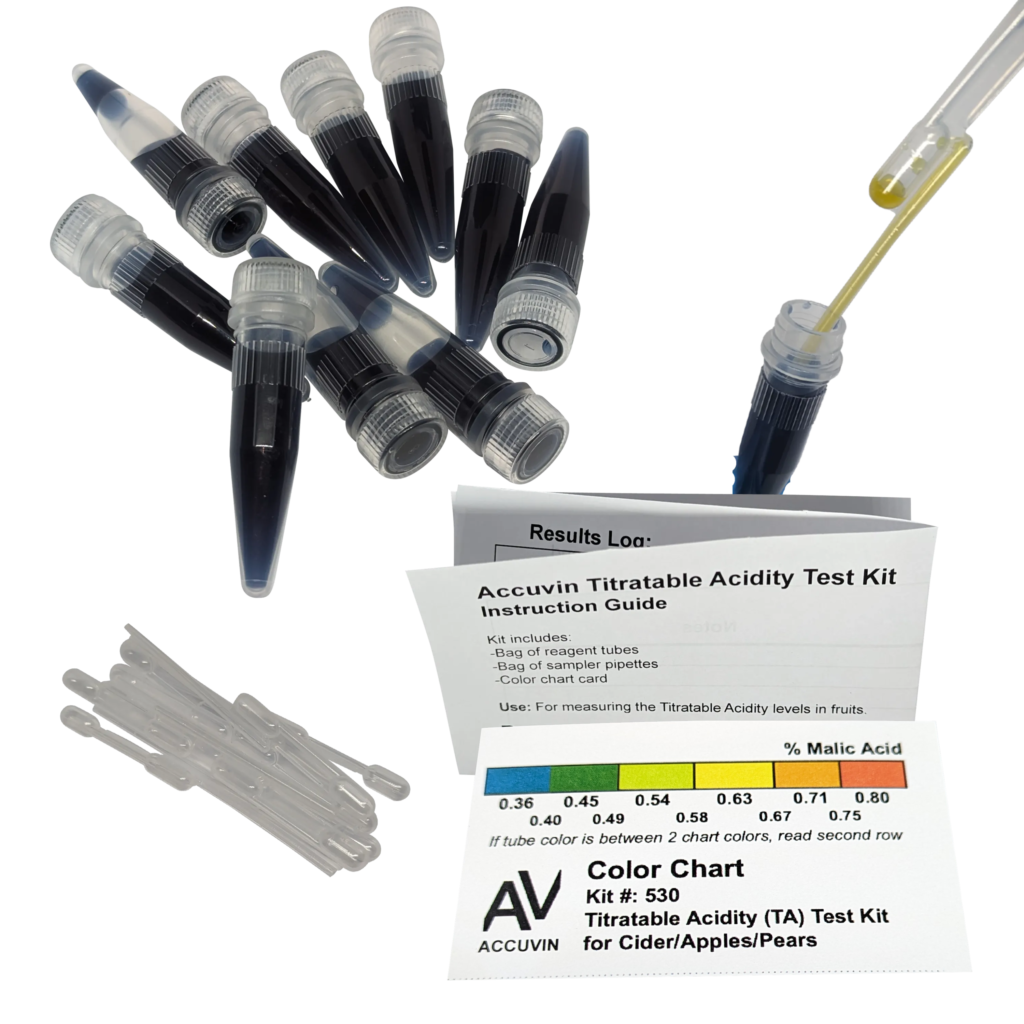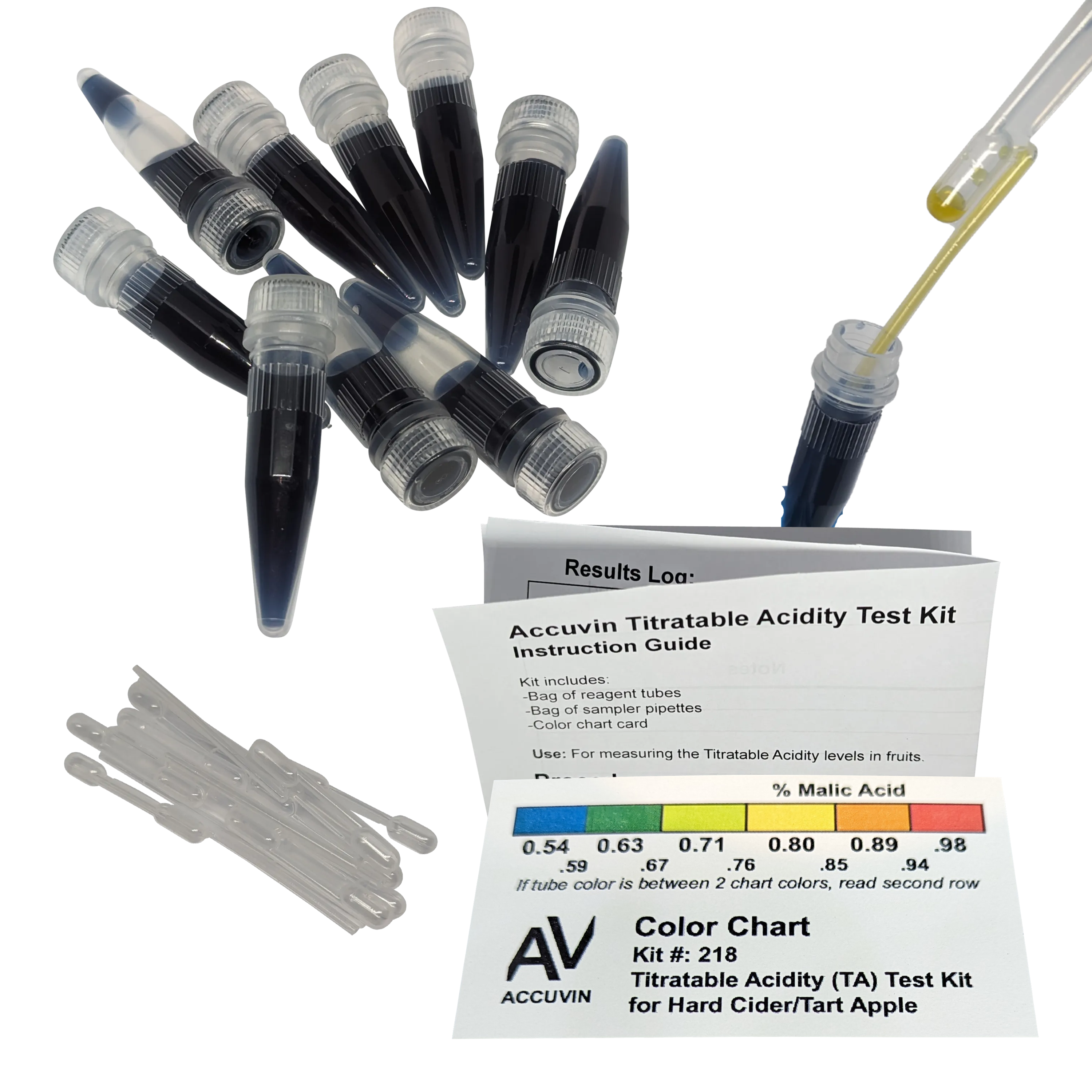Tracking MLF progress allows the detection of problems when they are small and require less intervention to fix. Our strips serve as an ideal method of determining the completion of MLF. They can also be used prior to paper chromatography to determine which barrels are ready for a more precise, though more tedious testing method.
The portion of total SO2 that is bound to other chemical components is less effective as a preservative by 30-70%, and as such free SO2 is a much more useful figure in winemaking. The degree of binding can change over time, making it essential to test to make sure your wine has adequate preservatives to get better with age.
